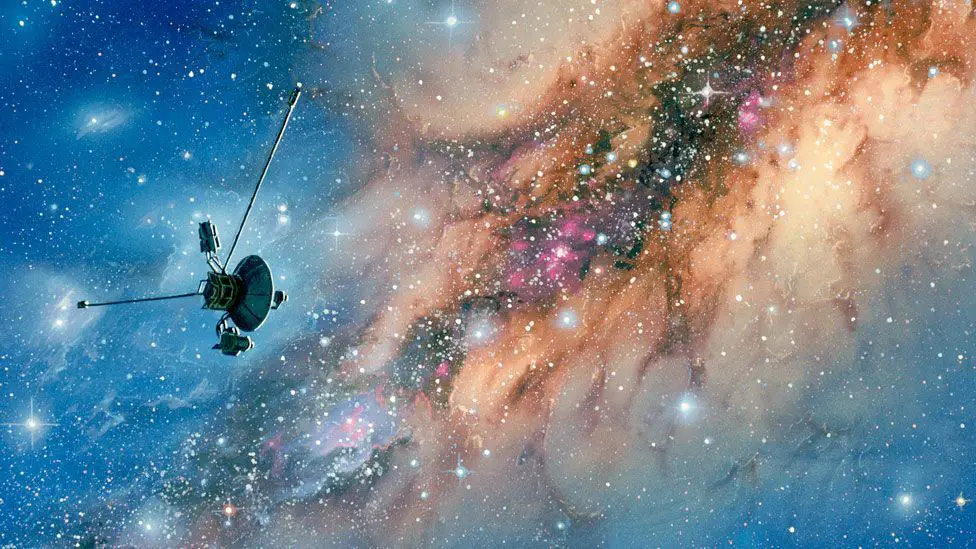NASA’s Voyager 1, an emblem of human ingenuity and curiosity, is currently facing significant challenges as it continues its 46-year-old journey into the depths of space.

The probe, which has been a cornerstone in our understanding of the outer reaches of the Solar System, is now experiencing communication issues that have left NASA engineers grappling with a complex problem billions of miles away.
Launched in 1977, Voyager 1’s mission has been to collect and transmit data on the transition between the heliosphere — the region dominated by the Sun’s magnetic field and solar wind — and the interstellar medium. This mission has provided invaluable insights into the nature of our Solar System and its boundary with the vastness of interstellar space.
However, recent updates from NASA indicate that the probe’s flight data system (FDS) is “not communicating properly.” This malfunction has resulted in Voyager 1 being unable to send usable information back to Earth. The probe typically transmits scientific readings and engineering updates in a binary code package, but it has been stuck transmitting patterns that are essentially indecipherable.
The Voyager team, based on Earth, has identified the malfunctioning instrument but faces the daunting task of troubleshooting it remotely. A recent attempt to restart the FDS and return it to its pre-issue state was unsuccessful, with the spacecraft still not returning usable data. The complexity of the issue is compounded by the fact that solutions often require consulting decades-old documents, written by engineers who could not have foreseen the challenges arising today.
This situation underscores the remarkable longevity and resilience of the Voyager probes. Launched over four decades ago, these spacecraft were not expected to last this long or travel this far. The fact that Voyager 1 is still operational, albeit with difficulties, is a testament to the foresight and engineering prowess of the teams that built and have operated it.
Voyager 1’s current predicament also highlights the challenges of deep space exploration. As spacecraft venture further from Earth, they encounter environments and situations that can be difficult to predict and respond to. The vast distances involved mean that communication delays are significant, and remote troubleshooting becomes an intricate and time-consuming process.
Despite these challenges, the Voyager mission continues to be a source of inspiration and scientific discovery. As one of humanity’s farthest-reaching emissaries, Voyager 1 has transformed our understanding of the Solar System and its place in the wider cosmos. Its journey into the unknown has paved the way for future missions and has expanded our horizons in the quest to explore and understand the universe.
As NASA’s engineers work to resolve Voyager 1’s issues, the scientific community and space enthusiasts around the world watch with anticipation. The challenges faced by Voyager 1 are not just technical hurdles; they are part of the ongoing story of human exploration and our relentless pursuit of knowledge beyond the confines of our planet.
Reference(s): NASA

